Ford Mustang Mach-E Vs Hyundai Ioniq 5: Which EV SUV is Right For You?

They’re two of the most visible EVs on the market. But in a battle of the Ford Mustang Mach-E vs Hyundai Ioniq 5, which is better suited to your needs?
We’re big fans of these two mid-sized EVs. The Mustang Mach-E ruffled feathers when it arrived in late 2020, largely due to that name. Whether you deem it worthy of the pony badge or not, the rest of the package delivers, with a roomy cabin, cutting-edge tech, and a range of different battery sizes and motor configurations. It’s even fun to drive—just like a Mustang.
Get a Quote on a New Ford Mustang Mach-E or Hyundai Ioniq 5The Hyundai Ioniq 5 doesn’t look like anything else in the Korean brand’s lineup. Heck, it doesn’t look like anything else on the road, either. The retro-futurist shape hides a deceptively large vehicle, one brimming with clever, unique features like a fully-reclining front seat and bi-directional charging. It hasn’t forgotten how to be a modern crossover either, with a smooth ride and the ability to carry five folks in comfort.
Which one better suits your needs? Here we take a closer look at their respective specifications to figure that out.
Cabin Space
Mustang Mach-E: If you think the Mach-E deviates too greatly from the traditional Mustang outside, just wait until you sit in it. No Mustang has ever felt so airy, so spacious. The Mach-E was clearly designed with the Tesla Model Y in mind, since it follows the same everything-in-the-touchscreen approach, with almost no physical switchgear sullying the dashboard design. There are clean, modern texture options, like the wool-esque top dashboard material. A low-profile center console houses the rotary drive selector, a pair of cupholders, and a bridge-style storage space for phones and small bags.
Like we said, no Mustang before this has been so spacious. Front-row passengers can enjoy anywhere from 38.9 to 40.4 inches (988–1,026 millimeters), depending on whether the panoramic glass roof is fitted. Legroom is also a vast 43.3 inches (1,100 mm). Rear-seat passengers lose about an inch (25 mm) of headroom, and can enjoy 38.1 inches (968 mm) of legroom. Shoulder room is 57.6 inches (1,466 mm) in front and 55.9 inches (1,420 mm) in back.
SEE ALSO: 2021 Ford Mustang Mach-E GT Review: Quicker, Yet CompromisedIoniq 5: The Hyundai’s interior is more of a middle-ground between the Mach-E’s minimalism, and a traditional ICE interior. There are actual buttons below its central touchscreen, for instance. The interior design is all about rounded squares and circles; even the seat controls are uniquely shaped. Also like the Mach-E, the Ioniq offers multiple colors and textures for its interior, which increases the feeling of space. The biggest difference is certainly the sliding center console, which can shift fore and aft for easy access.
The Ioniq is a couple inches shorter than the Mach-E, though its interior dimensions are practically the same. Headroom ranges from 39.1 to 39.8 inches (993–1,011 mm), again depending on the glass roof. Legroom is the biggest gap, though 41.7 inches (1,059 mm) is still more than enough for anybody not actively playing in the NBA. Second-row headroom can get as tight as 37.5 inches (953 mm), or as generous as 38.7 inches (983 mm). Folks in the back get 39.4 inches (1,001 mm) of legroom. The Hyundai has slightly less front hip room than the Ford up front, but beats it in the back, and has more shoulder room in both rows.
SEE ALSO: Nissan Ariya vs Hyundai Ioniq 5: Which EV SUV is Right for You?Bottom Line: These two are very similarly sized, and that tracks with their respective interior measurements. Taller folks will appreciate the added height of the Mach-E’s cabin, while the Ioniq 5’s extra width makes it feel more laterally spacious.
Cargo Space and Towing
Mustang Mach-E: Pop the tailgate open and the Mach-E will swallow 29.7 cubic feet (841 liters) with the rear seats up. Drop ’em and you’ve got a more than double the space: 59.7 cu-ft (1,691 L) to be exact. There’s also an additional 4.7 cu-ft (133 L) of storage in the frunk.
Officially, the Mach-E isn’t approved for towing here in North America. However, over in Europe, Ford has recently upped the SUV’s towing capacity to 3,306 lb (1,500 kg). Hmmm…
Ioniq 5: Talk about close. Open the Ioniq 5’s funky hatch and you’ve got 27.2 cu-ft (770 L) of storage. Drop the rear seats and it comes close to the Mustang, with 59.3 cubes (1,679 L). The wheel wells cut into the storage space more than in the Mach-E. Also, the Ioniq 5 has no storage up front in the nose.
For 2023, Hyundai has upped the Ioniq 5’s max towing capacity. For all but the base model, you’re looking at a 2,300-pound (1,043-kilogram) max.
Bottom Line: The Mustang holds a slight storage space advantage in the tailgate fight, and has the backup frunk. On the flip side, only the Ioniq 5 is officially rated to tow in North America.
SEE ALSO: 2023 Hyundai Palisade Review First Drive: Just Like The Old Car, But BetterTechnology and Features
Mustang Mach-E: Central command inside the Mach-E comes courtesy of a big 15.5-inch, portrait-orientation touchscreen. Just about everything is controlled via the screen, which runs Ford’s Sync 4 operating system, while the rotary dial at the bottom handles audio volume. Ford keeps the climate controls on the screen at all times, which somewhat makes up for the lack of physical buttons. There’s also a second, smaller screen ahead of the driver.
This being a modern EV, all manner of customization is available for drivers, including tailoring the drive modes. The native navigation can include charging locations on the route, and the FordPass mobile app allows drivers to check on the car or even precondition the battery. Wireless Apple CarPlay and Android Auto are standard. Ford’s BlueCruise hands-free highway driving assist is also available.
Ioniq 5: The Ioniq 5 takes a more traditional approach to its infotainment setup, with a pair of 12.0-inch screens combined into one panel atop the dashboard. The left screen handles traditional instrument panel duties, with a large range of info customization. Over on the right, owners will find the latest Hyundai infotainment setup. It’s not quite as elegant as the one in the Mustang, but the Ioniq 5’s touchscreen offers innumerable customization options. An available head-up display (HUD) works in tandem with the native navigation to beam augmented reality driving instructions onto the windshield.
The Hyundai still uses wired connections for its Apple CarPlay and Android Auto. That’s an oddly old-fashioned approach in what is a very modern car, and the wires will dangle between the seats. On the other hand, it has a unique bi-directional charging setup that the Mustang lacks, offering up to 1.9-kW of power through the charge port, to power accessories.
SEE ALSO: 2022 Ford Bronco Everglades Review: 4 Cool Features and 2 That are NotBottom Line: Both of these cars offer the cutting edge from their respective brands. The Ford’s infotainment screen is easier to use, its wireless phone mirroring is quick and easy, and BlueCruise is handy. The Ioniq 5’s infotainment system will appeal to those who want to tailor every aspect, and its ability to act as an impromptu charging station on, say, a camping trip can’t be ignored.
Ford Mustang Mach-E vs Hyundai Ioniq 5: Powertrains
Mustang Mach-E: Ford offers the Mustang Mach-E in rear- and all-wheel drive configurations, with two battery sizes. A 70.0-kWh battery pack is standard on the Select and Premium trims, with a 91-kWh pack optional on the latter, and standard on the California Route 1 and GT models. Similarly, the Select and Premium are standard rear-drive with the option for AWD; the CR1 and GT are AWD-only.
The mix-and-match results in a few different sets of power figures. The small-battery model is good for 266 hp regardless of driven wheels, with either 317 (RWD) or 428 (AWD) pound-feet of torque. Pair the 91.0-kWh pack with rear-drive for 290 hp and 317 lb-ft; stick it to AWD and the second motor boosts that to 346 hp and 428 lb-ft.
Lastly, the GT spits out 480 hp and 600 lb-ft. Opt for the GT Performance Edition and torque creeps up to 634 lb-ft.
SEE ALSO: Ford Mustang Mach-E vs Tesla Model Y ComparisonIoniq 5: The Hyundai offers a similar split of two battery sizes, and either rear- or all-wheel drive. The Standard Range model is strictly rear-drive, pairing a 58.0-kW battery pack with an 168-hp, 258-lb-ft electric motor. Move up to the extended range model and its bigger 77.4-kWh battery pack, and the horsepower bumps up to 225 hp (torque remains unchanged). Finally, the AWD long-range model has two electric motors, which results in 320 hp and 446 lb-ft of torque.
Bottom Line: Ford offers more variety here. It also has a high-performance model, which the Ioniq 5 won’t have until the N version touches down next year.
Range and Efficiency
Mustang Mach-E: With so many permutations, the Mach-E has a whole bunch of different range estimates. At the low end is the 70.0-kWh AWD model, which offers 224 miles (360 km) of range. Stick to rear-drive and that stretches to 247 miles (398 km). Move up to the big battery and there’s 290 miles (467 km) of range with the AWD setup, and 306 miles (492 km) with RWD. The California Route 1, which has smaller wheels and is only available in AWD now, stretches its range even further to 312 miles (502 km). Meanwhile, the hi-po GT and GTPE drop down to 270 and 260 miles (435 and 418 km), respectively.
On the efficiency front, the Select and Premium trims range from 91 mpg-equivalent combined (AWD Extended Range) to 103 mpg-equivalent (RWD Standard Range). The California Route 1 scores 98 mpge, and the Mach-E GT Performance Edition does 82 mpge. In a more useful measure, the most efficient model manages 33 kWh/100 miles (20.3 kWh/100 km), and the GTPE scores 41 kWh/100 miles (25.5 kWh/100 km).
SEE ALSO: Hyundai Tucson Hybrid vs Ford Escape PHEV ComparisonIoniq 5: The Ioniq 5 is generally more efficient than its American competitor. The Standard Range kicks things off with a combined 110 mpg-equivalent rating, using 31 kWh/100 miles (19.3 kWh/100 km). Opt for the Extended Range and you’ve got the most efficient Ioniq 5, scoring 114 mpg-e. That translates to 30 kWh/100 miles (18.6 kWh/100 km). Spring for the ultimate AWD model and those figures dip to 101 mpg-equivalent and 33 kWh/100 miles (20.7 kWh/100 km).
In terms of range, the small-battery model manages 220 miles (354 km), the long-range AWD model scores 266 miles (428 km), and the long-range rear-drive is the range leader with 303 miles (488 km).
Bottom Line: Are you a fan of efficiency? The Hyundai has the edge there. If you need every last mile between charges, however, the Mustang is the champ there.
SEE ALSO: Hyundai Tucson Hybrid vs Toyota RAV4 Hybrid Comparison: Fuel-Sipping Family HaulersFord Mustang Mach-E vs Hyundai Ioniq 5: Safety
Mustang Mach-E: The Mach-E comes with a full complement of driver assists. These include automated emergency braking, lane-keep assist, adaptive cruise control, auto high beams, and blind-spot monitoring with rear-cross traffic alert. Ford BlueCruise, the hands-free highway driving assist, is available as an option, as is a 360-degree camera.
At the time of writing, the National Highway Traffic Safety Administration (NHTSA) had not yet tested the Mach-E for frontal impacts. It did score a perfect result for side impacts and rollovers, however. Meanwhile, the Insurance Institute for Highway Safety (IIHS) rates certain Mach-E trims a Top Safety Pick, depending on headlights.
Ioniq 5: Like the Mach-E, the Ioniq 5 comes well-stocked on safety, on all trims. Even the entry-level model includes things like automated emergency braking (with junction turning), adaptive cruise control, lane-keep assist, blind-spot monitoring with rear cross-traffic alert, auto high beams, safe exit assist, and road sign recognition. Surround View Monitor, Highway Driving Assist II, and Blind-Spot View Monitor are all optional.
The IIHS awards the Ioniq 5 its highest Top Safety Pick+ designation, while the NHTSA had not rated it at the time of writing.
Bottom Line:
Styling
Mustang Mach-E: Despite the name, the Mach-E really only bears a slight resemblance to Ford’s iconic pony car. The connections do become clearer when you sit it beside the new 2024 Mustang coupe, however. The wide headlights, tri-bar taillights, and powerful rear haunches combine for a good-looking SUV.
Ioniq 5: The Ioniq 5 is what happens if you transform an ’80s arcade cabinet into a car. It’s a retro-futurist hatchback at 130-percent scale. We enjoy the pixelated front and rear lighting, the old-school wire-like wheel design of the top trim, and the angular body creases. The absence of a rear wiper might be a case of function following form, however. Hyundai also doesn’t offer too many color choices, preferring to keep the Ioniq 5 largely grayscale.
SEE ALSO: Hyundai Palisade vs Kia Telluride ComparisonBottom Line: With two so dramatically different looks, you’re bound to have a preference—or even like them both for different reasons. Nonetheless, neither the Ford Mustang Mach-E nor Hyundai Ioniq 5 can be accused of blending into the crowd.
Pricing and Value
Mustang Mach-E: In America, the Mustang Mach-E range kicks off at $48,195 for the Select RWD, including destination. Opting for the two-motor AWD setup brings that number up to $50,895. The Premium model starts at $56,275, and it opens up access to the optional Extended Range Battery ($8,600). AWD remains a $2,700 option on this trim. Next there is the AWD-only California Route 1 ($64,875), and the GT ($71,195). The GT Performance Edition is a further $6,000 upcharge.
In Canada, the Select RWD begins at $59,090 CAD, including destination. AWD is a $3,000 upcharge. For the Premium trim ($74,090 CAD), AWD is a $3,750 CAD add-on, while the extended-range battery comes in at a pricey $13,000 CAD. The CR1 rings in at $88,020 CAD, while Canada only gets the Performance Edition of the GT, at $99,590 CAD.
Ioniq 5: American buyers can find themselves in an Ioniq 5 from $42,745, including destination. That nets the basic 168-horsepower, rear-drive SE Standard Range model. The rest of the range uses the larger battery, arranged in SE ($46,795), SEL ($48,745), and Limited ($53,895) trims.
The Canadian Ioniq 5 lineup looks quite a bit different. There are three trims: Preferred ($50,924 CAD), Preferred Long Range ($54,924 CAD), and Preferred AWD Long Range ($56,924 CAD). There’s an Ultimate package ($6,000 CAD) for the latter that brings it more or less in-line with the US Limited trim.
Bottom Line: The Ioniq 5 holds the price advantage across the board, though you are getting less power and less range in those cases. We’ll have to wait a bit longer for the Ioniq 5 N to truly have a Mach-E GT competitor.
Ford Mustang Mach-E vs Hyundai Ioniq 5: In Conclusion
Both of these EV SUVs come highly rated here at AutoGuide. Anybody who thinks the electric future holds a bunch of samey blobs need only drive these two to know that there will still be lots of room for different tastes.
If you prefer a bit of a sporty lean to your mid-sized SUVs, then the Ford Mustang Mach-E is your ride. It rides a little more firm, it turns in a little sweeter, and in GT form it’s seriously quick. The Ford has a little more range, but requires a larger battery to do it—one that can’t hit the charging speeds of the Ioniq 5 either, if you plan on doing any DC fast charging. It also can’t tow, at least not officially.
The Ioniq 5 is a little better-suited to everyday use. Its interior is more spacious (rear headroom excepted), and the ride is smoother. There’s more of a lounge vibe to the Ioniq 5, and it will tow if you need it to. Once you’re at the destination, you can even charge items via the car, too.
As ever, we recommend you drive both before putting your money down. But if push came to shove, for our everyday pick of the Ford Mustang Mach-E vs Hyundai Ioniq 5, we’d go with the Hyundai.
Become an AutoGuide insider. Get the latest from the automotive world first by subscribing to our newsletter here.

Kyle began his automotive obsession before he even started school, courtesy of a remote control Porsche and various LEGO sets. He later studied advertising and graphic design at Humber College, which led him to writing about cars (both real and digital). He is now a proud member of the Automobile Journalists Association of Canada (AJAC), where he was the Journalist of the Year runner-up for 2021.
More by Kyle Patrick



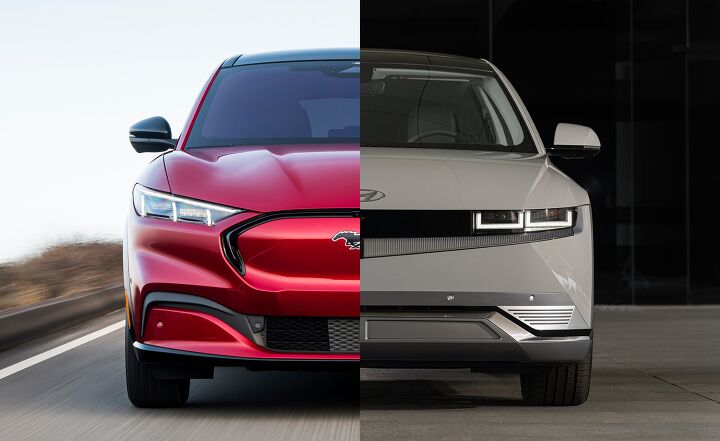

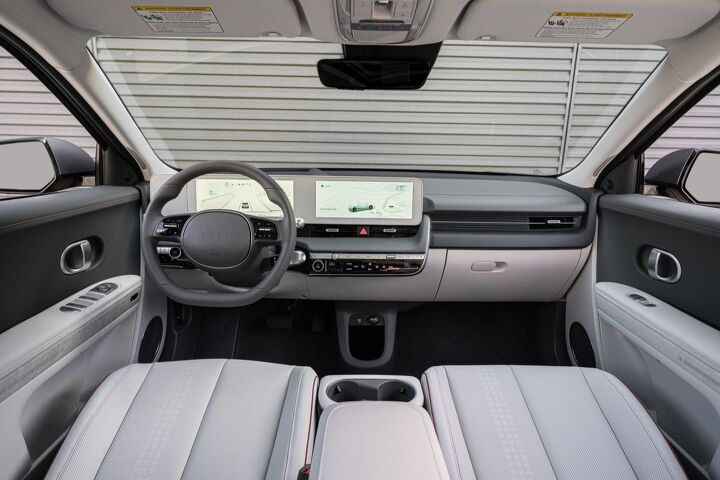




























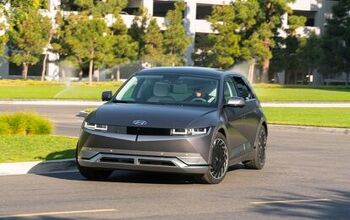

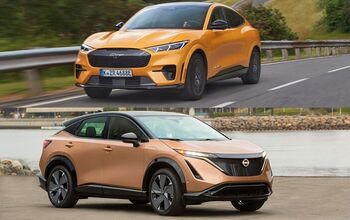



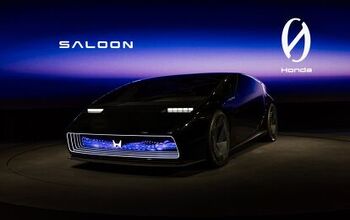





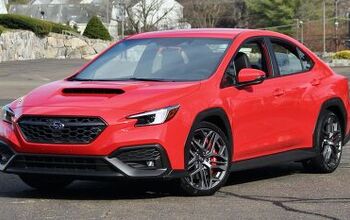
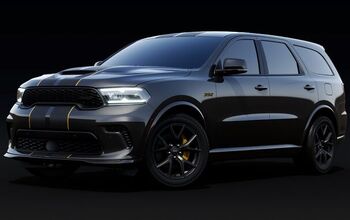

Comments
Join the conversation
Yep, I'd choose the Hyundai here also.
For me and my needs I'd take the Hyundai.